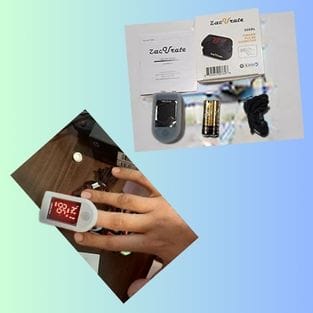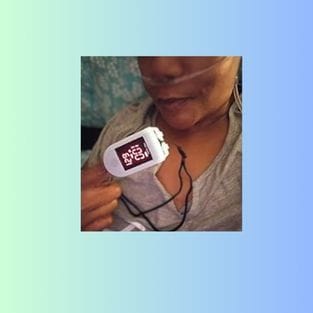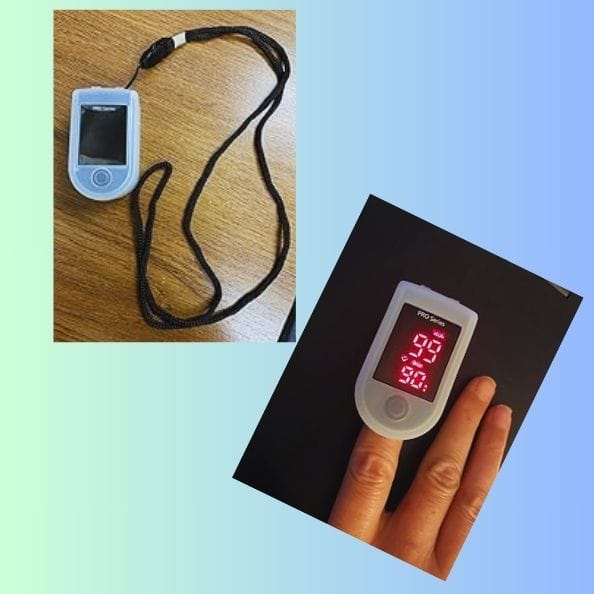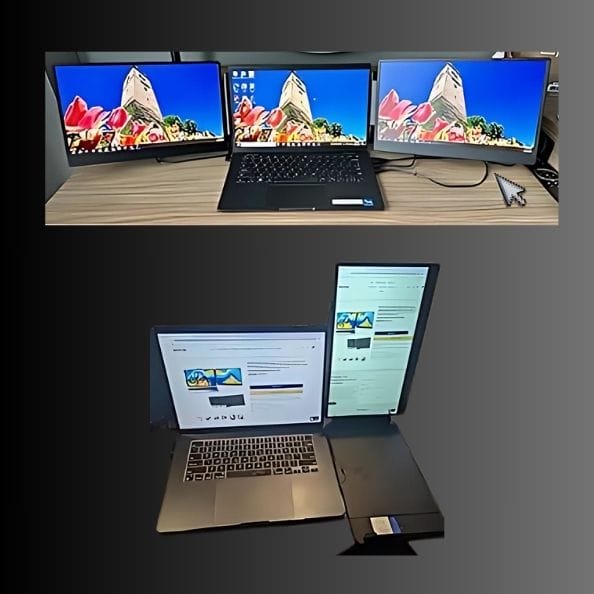Key Takeaways:
- Understand what a fingertip pulse oximeter is and how it measures blood oxygen saturation.
- Learn the importance of monitoring SpO2 levels for various health conditions.
- Discover how to properly use and interpret readings from a pulse oximeter.
Monitoring your blood oxygen levels is crucial for maintaining good health, especially if you have certain medical conditions.
A fingertip pulse oximeter is a non-invasive tool that helps you do just that.
In this comprehensive post, we'll explore everything you need to know about these devices, from their function to how to interpret their readings.
What is a Fingertip Pulse Oximeter?
A fingertip pulse oximeter is a small, clip-like device that measures the oxygen saturation level, or SpO2, in your blood. It does this by emitting light through your fingertip and analyzing the light absorption of your red blood cells.
This process provides instant feedback on how well oxygen is being transported to the extremities furthest from your heart, such as your fingers.
Why Monitor Blood Oxygen Saturation?
Monitoring blood oxygen saturation is vital for individuals with respiratory or cardiovascular conditions, athletes, and people living at high altitudes.
It helps in detecting hypoxemia, a condition where blood oxygen is lower than normal, which can lead to serious health issues if not addressed promptly.
Regular monitoring can also assist in managing chronic conditions like COPD or asthma.
How Does a Pulse Oximeter Work?
The pulse oximeter works by
- passing beams of light through the blood in your finger to measure your oxygen saturation,
- calculating the percentage of oxygenated hemoglobin in the blood and
- giving a reading of your SpO2 levels.
This reading helps you understand how efficiently oxygen is being carried to the parts of your body that need it most.
Choosing the Right Pulse Oximeter
When selecting a pulse oximeter, consider factors such as
- accuracy,
- ease of use,
- display clarity, and
- durability.

Some models also come with additional features like heart rate monitoring or Bluetooth connectivity for tracking your readings over time.
It's important to choose a device that meets your specific needs and is simple to operate.
How to Use Your Pulse Oximeter
To get an accurate reading, ensure your hand is warm, relaxed, and below heart level. Open the clip, place your finger inside, and wait for the device to turn on and display the reading.
*It's best to remain still during this process, as movement can affect the accuracy of the measurement.
Interpreting Your Pulse Oximeter Readings
A normal SpO2 reading typically ranges from 95% to 100%.
Readings below 90% are considered low and may indicate a need for medical attention.
*However, it's important to consult with a healthcare professional to understand what is normal for you, especially if you have an underlying health condition.
When to Use a Pulse Oximeter
You should use a pulse oximeter if you have symptoms of low oxygen levels, such as shortness of breath, chest pain, or confusion.

It's also useful for monitoring your oxygen saturation during or after exercise, if you're recovering from a respiratory illness, or if you have a health condition that affects your oxygen levels.
The Role of Pulse Oximeters in Managing Health Conditions
Pulse oximeters play a crucial role in managing conditions like sleep apnea, where oxygen levels may drop during sleep.
They are also essential for people with heart failure or chronic lung diseases, as they provide immediate feedback on the effectiveness of treatments and the need for supplemental oxygen.
Pulse Oximeters and COVID-19
During the COVID-19 pandemic, pulse oximeters became a key tool for monitoring patients with the virus. They helped in early detection of hypoxemia, which can occur even when patients do not feel short of breath.
This early detection is critical for timely medical intervention.
Tips for Accurate Pulse Oximeter Readings
To ensure accurate readings, avoid wearing nail polish or artificial nails, as they can interfere with the device's sensors.
Also, use the oximeter on the same finger each time for consistency and take multiple readings to confirm accuracy.
FAQ Section
Q: What is a normal SpO2 reading on a pulse oximeter?
A: A normal SpO2 reading typically falls between 95% and 100%.
Values below 90% may be a cause for concern and warrant medical advice.
Q: Can I use a pulse oximeter if I have nail polish on?
A: Nail polish, especially dark colors, can interfere with the sensor's ability to accurately measure your SpO2 levels.
It's best to remove nail polish from at least one finger when using the device.
Q: How often should I use my pulse oximeter?
A: The frequency of use depends on your health condition and the advice of your healthcare provider. Some may need to use it multiple times a day, while others may only need to use it occasionally.
Always follow the guidance of a medical professional.
Your Takeaway
Fingertip pulse oximeters are invaluable tools for monitoring blood oxygen saturation levels.
They are easy to use, widely accessible, and can provide critical information for managing health conditions or during medical emergencies.
By understanding how to choose, use, and interpret a pulse oximeter, you can take an active role in monitoring your health or that of a loved one.
Disclaimer.
When you purchase through links on our site, we may earn an affiliate commission (that's how we stay in business). FirstFewFinds may use affiliate links to products and services on retailer sites for which we can receive compensation if you click on those links or make purchases through them.
We hope you find the list of our first few finds useful and helpful. Each product on our list has been carefully chosen by our writers and all opinions are our own. Check your choices and enjoy finding exactly what you need!








